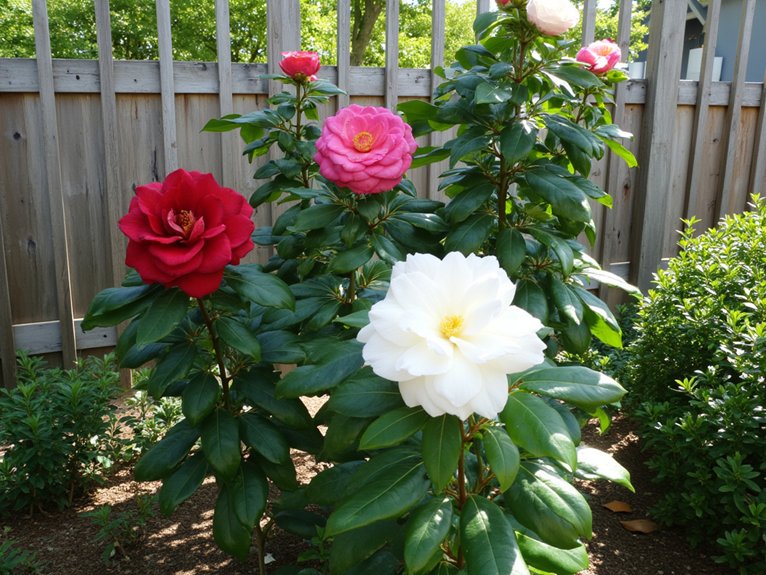Successful camellia cultivation hinges on understanding these flowering shrubs’ complex relationship with sunlight. While some varieties flourish in deep shade, others require several hours of direct sun exposure for ideal blooming. According to horticulturist Dr. Sarah Chen, “The key difference between Japonica and Sasanqua varieties lies in their distinct light requirements.” This essential knowledge forms the foundation for creating thriving camellia gardens across diverse growing environments.
Contents
Understanding Camellia Species and Their Light Requirements

When it comes to growing healthy camellias, understanding the distinct light requirements of different species is essential for success. Two primary species demonstrate notable differences in their light adaptation patterns:
Japonica camellias flourish in shaded conditions, preferring dappled sunlight filtered through tree canopies. These varieties produce ideal camellia growth when protected from intense afternoon rays, though they tolerate 2-3 hours of gentle morning sun.
Sasanqua varieties show greater sun tolerance, adapting well to both partial shade and full sun locations. These hardy plants can handle 4-6 hours of direct sunlight daily, making them more versatile for varied garden settings.
The Perfect Balance: Sun Exposure Guidelines for Healthy Camellias
Finding the right balance of sunlight exposure marks a key difference between thriving camellias and struggling plants. For best camellia health, Japonica varieties thrive best in dappled shade or areas receiving morning sun only, while Sasanqua types can handle more direct light.
The ideal placement depends on the specific variety:
- Japonicas: Less than 3 hours direct sun, preferably filtered through trees
- Sasanquas: Up to 6 hours of sun, avoiding intense afternoon exposure
When selecting a planting location, observe the daily sun patterns and choose spots that protect these elegant shrubs from harsh afternoon rays while providing sufficient light for blooming.
Popular Camellia Varieties and Their Sunlight Preferences

Different camellia varieties exhibit distinct preferences for sunlight exposure, which directly impacts their growth and blooming patterns. Japonica varieties thrive best in dappled shade or areas with morning sun only, producing abundant blooms when protected from intense afternoon light.
Sasanqua varieties demonstrate greater sun tolerance, with popular cultivars like ‘Alabama Beauty’ adapting well to full sun conditions. The ‘Fairy Blush’ Japonica performs exceptionally in full shade, reaching heights of 4-5 feet, while ‘Jacks’ Sasanqua prefers partial shade with some morning sun exposure, growing 6-10 feet tall and 4-8 feet wide.
Tips for Creating Optimal Light Conditions in Your Garden
Creating ideal light conditions for camellias requires careful assessment of existing garden spaces and strategic placement of shade-providing elements. Gardeners can implement effective light filtration techniques by installing shade cloth that blocks 30-50% of sunlight or utilizing existing tree canopies.
For areas lacking natural coverage, shade plantings offer excellent solutions. Tall deciduous trees provide dappled light, while evergreen shrubs create consistent shade zones. According to landscape architect Sarah Chen, “Strategic placement of companion plants like hydrangeas or azaleas can create micro-climates perfect for camellia growth.”
Consider vertical structures such as pergolas or lattice panels to shield camellias from intense afternoon sun while allowing gentle morning light to filter through.
